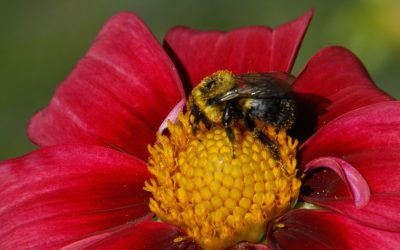The Bee Movie: The Real-Life Version
If you haven’t had the opportunity to watch the Dreamworks Production of ‘The Bee Movie’ you are really missing out. This cute animation not only portrays the valuable lesson of the importance of human/insect interaction, but it also portrays the importance of pollinators in everyday life. (Watch the full movie here: https://kisscartoon.se/Cartoon/Bee-Movie/Movie?id=1970)
Pollination is a process that happens when wind, water, or wildlife carry pollen from the anther (male part) to the stigma (female part) of flowers. Almost 90% of the world’s flowering plant species rely on animal pollinators. Bees (Native and European Honey Bees), bumble bees, butterflies, moths, hummingbirds, and several other insects and creatures are common pollinators.
Pollinators are very important to our ecosystem!
They help us to enjoy well-balanced diets by providing nutritious fruits, vegetables, and nuts including apples, berries, cherries, coffee, cocoa, grapes, melons, potatoes, and almonds. This food is important for wildlife, too.
Worldwide, roughly 1,000 plants grown for food, beverages, fibers, spices, and medicines need to be pollinated by animals to produce the goods on which we depend. (A more detailed list is available at https://honeylove.org/list-of-food/). In the United States alone, pollination by honey bees, native bees, and other insects produces $40 billion worth of products annually.
Worldwide there is disturbing evidence that pollinating animals have suffered from loss of habitat, chemical misuse, introduced and invasive plant and animal species, and diseases and parasites. Many pollinators, most recently including some bumble bees, are federally “listed species,” meaning that there is evidence of their disappearance in natural areas. Not even the managed bees are safe. In the U.S. over 50% of the managed honeybee colonies have been lost over the past 10 years.
How you can help
Here is how you can help:
- Plant for pollinators
- Cultivate native plants, especially those that provide nectar and larval food for pollinators -Free Eco-regional Pollinator Planting Guides are available online for the entire US and Canada
- Install houses for bats and native bees
- Supply salt or mineral licks for butterflies and water for all wildlife. Also, provide areas for butterflies to stop for water.
- Reduce pesticide use! Most the insecticides available at local box stores are toxic to bees and other pollinators!!!!!!
- Watch the labels for toxic chemicals such as neonicotinoids.
- Some insecticides have warnings or bee hazards on their label because they are toxic to honey bees, causing honey bee deaths. If the insecticide has a sub-lethal effect on honey bees it may result in reduced larval survival, altered foraging behavior or shortened lifespan of adult bees. The true extent of the sub-lethal affects is still unknown.
- Substitute flower beds for lawns, allow flowering plants to produce in your lawn as a food source, and don’t use substances harmful to pollinators.
- Minimize Your Environmental Impact – Buy at locally produced or organic food – walk, cycle, or use public transit – minimize your automobile and electricity use – Reduce your consumption, reuse, and recycle.
- Enjoy Nature – Build your connection with the natural world by enjoying time outdoors – experience gardening and working with plants and animals.

